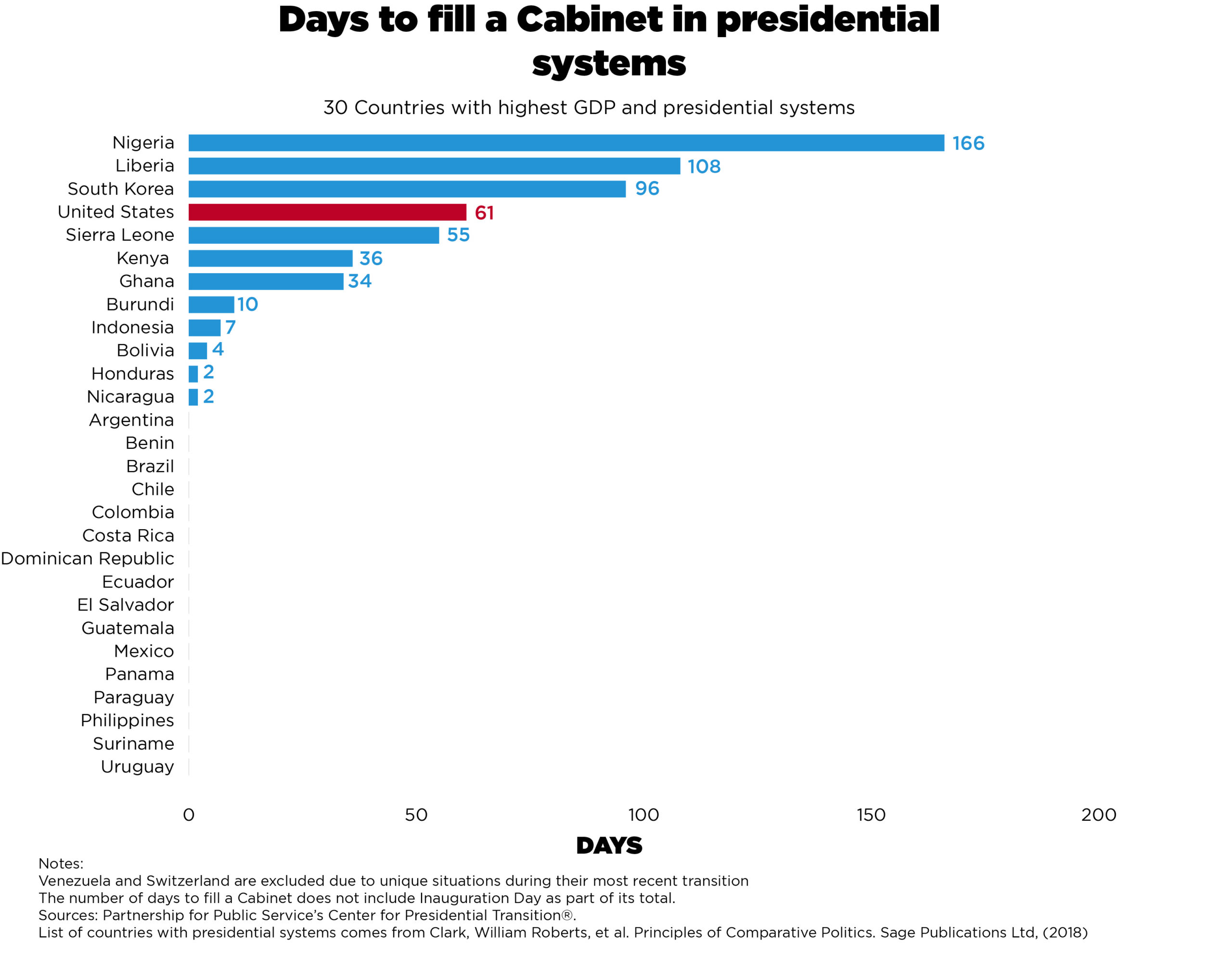Blog
December 13, 2023
Transition planning is crucial for second-term administrations
Nearly half of political agency leaders leave within the first six months of a second term
While planning for presidential transitions is most often associated with candidates running to be a first-time president, incumbents seeking re-election must also engage in transition planning for a second term.
Recent administrations have tended to view a second term as a continuation of the first as opposed to an opportunity to transition to a new administration with refreshed goals, improved processes and new leadership. As Josh Bolten, President George W. Bush’s chief of staff, said, “Every two-term presidency has had the same problem, which is the president doesn’t think of it as a transition.”
A major reason to plan ahead is that incumbent presidents should expect high levels of turnover among top political appointees. In fact, for recent two-term administrations, almost half of top agency leaders leave soon after a re-election victory. Presidents running for a second term should seek to retain top talent whenever possible and identify replacements prepared for the arduous Senate confirmation process.
Data compiled by the Partnership for Public Service’s Center for Presidential Transition shows that for the last three two-term presidents, an average of 46% of their top Senate-confirmed officials serving on Election Day left their jobs within the first six months of the second terms. These include Cabinet secretaries, deputy secretaries and undersecretaries. On average, 11% of those serving on Election Day resigned their positions even before the re-elected president’s second inauguration, while 31% were no longer serving within three months into the second term.
Turnover is generally high at the Cabinet level. During the period between the election and the early months of the second term, five Cabinet secretaries left the Clinton administration, nine departed the Bush administration and seven left the Obama administration.
The need to plan for a transition to a potential second term
Agency leaders leave for a variety of reasons, whether to accept new opportunities or because the president wanted a change in leadership. However, high turnover among top officials decreases institutional knowledge and has the potential to make long-term, transformational changes more challenging for an agency or administration.
While many presidents have accomplished signature priorities in the first year, in part because of effective transition planning, fifth years have not been nearly as productive. Previous second-term presidents have missed opportunities for early victories because most have minimized the need for advanced planning.
Effective second term transition planning can change turnover challenges into opportunities. Four additional years in the White House offer a chance for a recalibration led by individuals with renewed energy and original ideas. “Newness is a good thing” and an opportunity to look for a “fresh perspective” according to Denis McDonough, who served in both terms of President Barack Obama’s administration.
As Bolten and the Center’s advisory board summarized in 2020, “Every second term administration benefits from fresh eyes and fresh legs. Every second term president experiences significant turnover and an important policy window after the election. Therefore, effective planning is essential given the inevitable turnover, a Senate confirmation process which unfortunately is taking longer, and the fact that the fifth year of a president’s tenure typically provides a window for bipartisan policy development.”
A second term offers a chance for a recalibration and a new start that requires serious preparation long before Inauguration Day. Even though it comes with great challenges, a second term provides the opportunity for a president to retain experienced leaders and bring in individuals with fresh ideas and new energy—should they plan accordingly.



